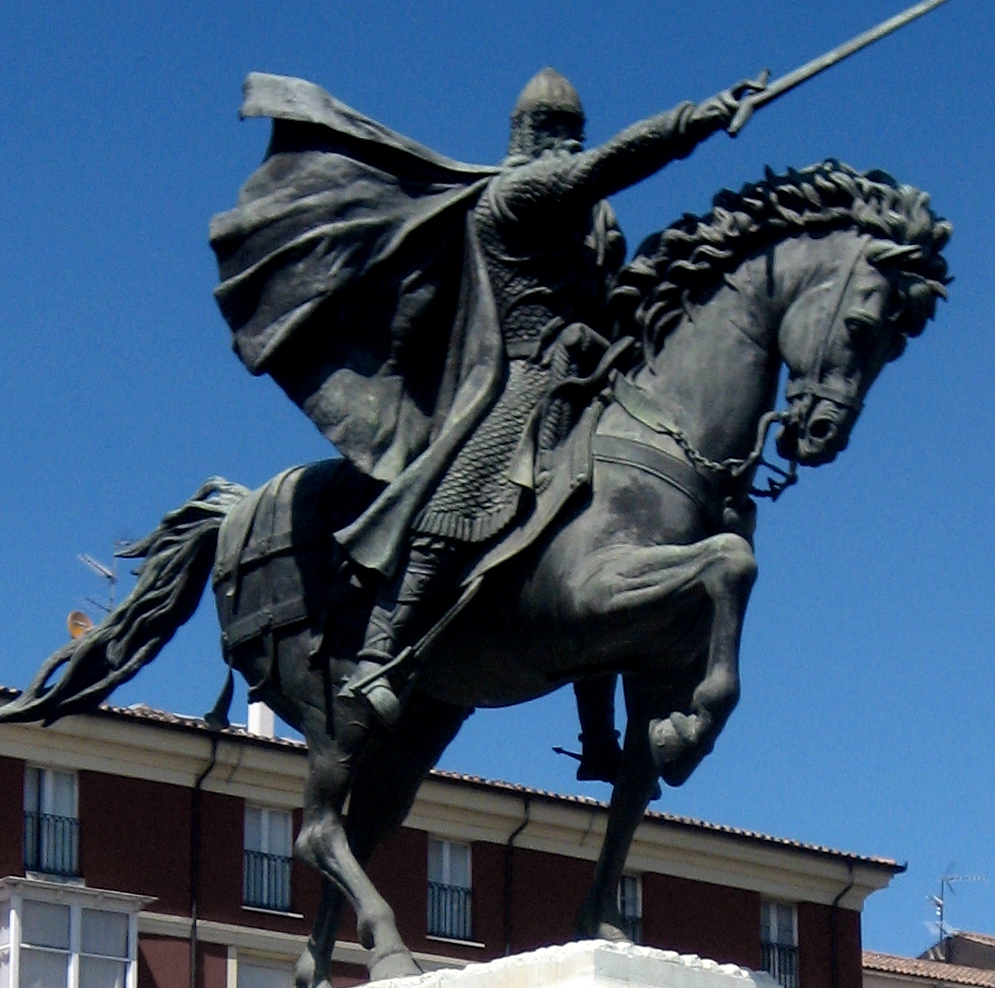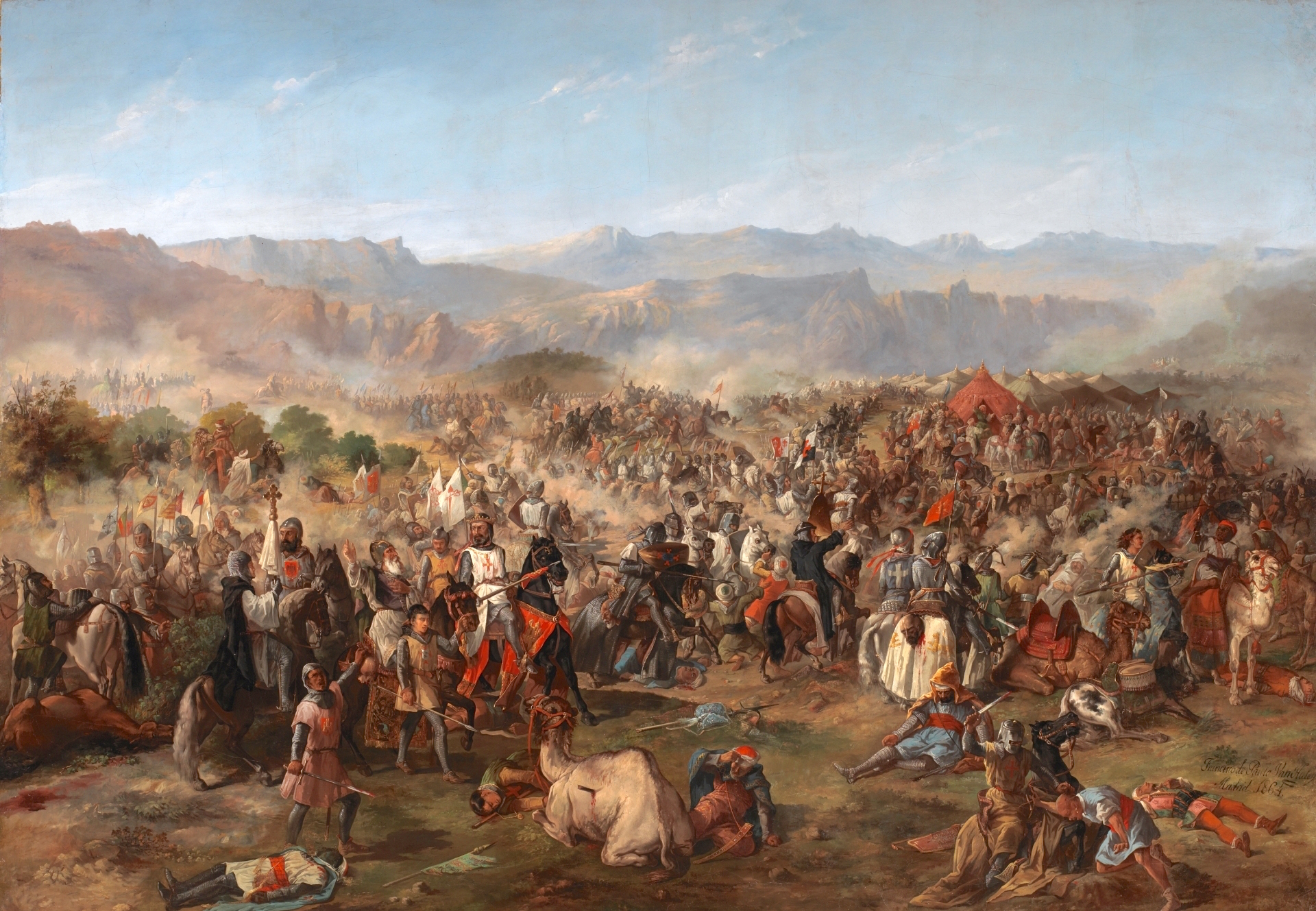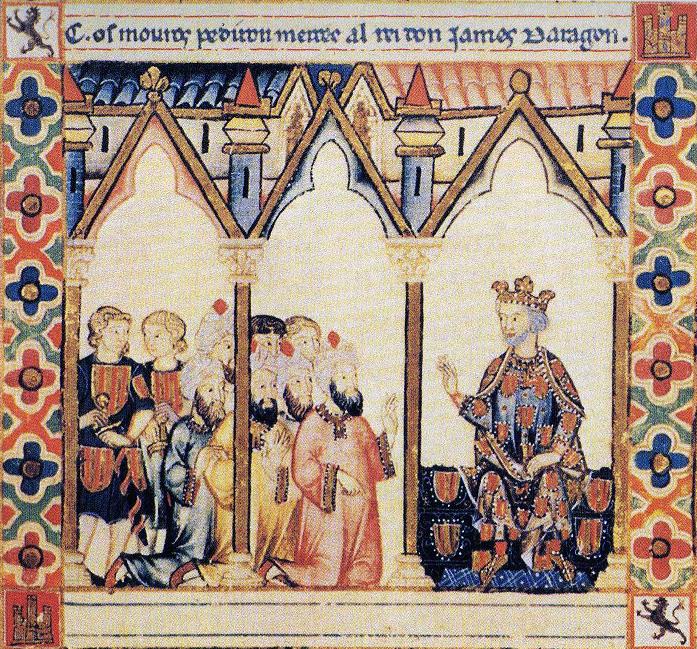|
Rodrigo Muñoz De Guzmán
Rodrigo Muñoz de Guzmán or Rodrigo Núñez de Guzmán (died ''Wiktionary:circa, ca.'' 1186), considered the common ancestor of the noble house of Guzmán, was a Kingdom of Castile, Castilian magnate and ''tenant-in-chief, tenente'' of Roa de Duero, Roa and of the village of Guzmán in Burgos (province), Burgos, from which this lineage took its name. Life Nothing is known about the parentage or ancestry of Rodrigo Muñoz de Guzmán. The Onomastics, onomastic customs of that time dictate that, given his patronymic Muñoz, he must have been the son of a Munio (Muño) or Nuño. He was a patron of several monasteries, including the Monastery of San Cosme and San Damián in Covarrubias (Burgos), Covarrubias and of the Monastery of San Cristóbal de Ibeas situated in Ibeas de Juarros, San Millán de Juarros which had been founded by Álvaro Díaz de Oca and his wife Teresa Ordóñez, the maternal grandparents of his wife Mayor. Rodrigo and Mayor were buried there. On 20 February 1151 ... [...More Info...] [...Related Items...] OR: [Wikipedia] [Google] [Baidu] |
House Of Guzmán
The House of Guzmán (''Casa de Guzmán'') is an old and noble Spanish family that emerged in Kingdom of Castile, Castile in the 12th century and became one of the most prominent dynasties of the Spanish kingdom until the 18th century. The original family gave rise to several branches, one of which became Duke of Medina Sidonia, Dukes of Medina Sidonia from the 15th century to the 18th century, in turn giving rise to other branches including the Casa de Olivares, Count-Dukes of Olivares. Origin The founder of what became the House of Guzmán was a Castilian nobleman named Rodrigo Muñoz de Guzmán, who is first seen in the mid 12th-century as ''tenant-in-chief, tenente'' (Lord) of Roa de Duero, Roa and lord of the village of Guzmán in Burgos (province), Burgos. The family would come to be known by a toponymic surname indicating their derivation from the latter village. Rodrigo last appears in January 1186.Gonzalo Martínez Díez, "Orígenes familiares de Santo Domingo, los linaj ... [...More Info...] [...Related Items...] OR: [Wikipedia] [Google] [Baidu] |
Rodrigo Fernández De Castro, The Bald
Rodrigo is a Spanish, Portuguese and Italian name derived from the Germanic name ''Roderick'' (Gothic ''*Hroþareiks'', via Latinized ''Rodericus'' or ''Rudericus''), given specifically in reference to either King Roderic (d. 712), the last Visigothic ruler or to Saint Roderick (d. 857), one of the Martyrs of Córdoba (feast day 13 March). The modern given name has the short forms ''Ruy, Rui'', and in Galician ''Roi''. The name is very frequently given in Portugal; it was the most popularly given masculine name in 2011–2012, and during 2013–2016 ranked between 4th and 2nd most popular. It is also moderately popular in Spain, ranking between 30th and 60th most popular during 2002–2015. History The form ''Rodrigo'' becomes current in the later medieval period. It is recorded in the '' Cantar de Mio Cid'', written c. 1200, as the name of Rodrigo Díaz de Vivar (c. 1043–1099, known as ''El Cid Campeador'').v. 467 ('' Destierro del Cid''): ''Mio Çid do ... [...More Info...] [...Related Items...] OR: [Wikipedia] [Google] [Baidu] |
Alfonso X Of Castile
Alfonso X (also known as the Wise, es, el Sabio; 23 November 1221 – 4 April 1284) was King of Castile, León and Galicia from 30 May 1252 until his death in 1284. During the election of 1257, a dissident faction chose him to be king of Germany on 1 April. He renounced his claim to Germany in 1275, and in creating an alliance with the Kingdom of England in 1254, his claim on the Duchy of Gascony as well. Alfonso X fostered the development of a cosmopolitan court that encouraged learning. Jews, Muslims, and Christians were encouraged to have prominent roles in his court. As a result of his encouraging the translation of works from Arabic and Latin into the vernacular of Castile, many intellectual changes took place, including the encouragement of the use of Castilian as a primary language of higher learning, science, and law. Alfonso was a prolific author of Galician poetry, such as the ''Cantigas de Santa Maria'', which are equally notable for their musical content as for ... [...More Info...] [...Related Items...] OR: [Wikipedia] [Google] [Baidu] |
Mayor Guillén De Guzmán
Mayor Guillén de Guzmán (1205–1262) was a member of one of the most aristocratic families in the court of King Ferdinand III of Castile. Her parents were Guillén Pérez de Guzmán and María González Girón, daughter of Gonzalo Rodríguez Girón and his first wife Sancha Rodríguez, and sister of Pedro Rodríguez de Guzmán, Castile's first adelantado and father of Alonso Pérez de Guzmán. Biographical sketch Her name is registered in contemporary chronicles and documents as the lover of prince Alfonso de Castilla, future king Alfonso X of Castile, son of Ferdinand III of Castile and Beatriz de Suabia. In 1255, Alfonso gave her lands in La Alcarria which included Cifuentes, Viana de Mondéjar, Palazuelos, Salmerón, Vadesliras and Alcocer. With the collaboration of King Alfonso, she founded the Monastery of Santa Clara de Alcocer in an unpopulated village called San Miguel del Monte within the jurisdiction of Alcocer. The foundational charter dated September 22, 12 ... [...More Info...] [...Related Items...] OR: [Wikipedia] [Google] [Baidu] |
Guillén Pérez De Guzmán
Guillén Pérez de Guzmán ( ca. 1180–1233), a member of the House of Guzmán, one of the most aristocratic of the Kingdom of Castile, was the maternal grandfather of Queen Beatrice of Castile, Queen Consort of Portugal as the wife of King Alfonso III. His father was Pedro Rodríguez de Guzmán—killed in the Battle of Alarcos on July 18, 1195and son of Rodrigo Muñoz de Guzmán—and Mahalda With his brothers Nuño and Theobald, he fought alongside King Alfonso VIII at the decisive Battle of Navas de Tolosa in 1212. Even though his kinsmen supported the Laras during the crisis that ensued after the death of King Alfonso VIII, Guillén, probably because of his marriage to a member of the Girón clan, supported Queen Berengaria of Castile and her son, the future king Ferdinand III. Marriage and issue He married, probably before 1217 and certainly before May 1222, María González Girón daughter of Gonzalo Rodríguez Girón and Sancha Rodríguez. María, after the death ... [...More Info...] [...Related Items...] OR: [Wikipedia] [Google] [Baidu] |
Nuño Pérez De Guzmán
( Spanish) or (Catalan) is a masculine given name of Latin origin (, , , and so on). Its Portuguese form is . Its patronymic is (). Already in the Middle Ages the name was being confused with the similar but distinct name Munio. The meaning of the name is disputed. It could come from late Latin , meaning 'tutor', later 'monk'. The classicist Iiro Kajanto proposed a Celtic origin, since the name is mainly found in formerly Celtic-speaking parts of Spain.Lidia Becker (2009), ''Hispano-romanisches Namenbuch: Untersuchung der Personennamen vorrömischer, griechischer und lateinisch-romanischer Etymologie auf der Iberischen Halbinsel im Mittelalter (6.–12. Jahrhundert)'' (De Gruyter), pp. 773ff. People with the given name Nuño *Nuño Rasura (9th century), one of two legendary judges of Castile *Nuño Fernández (fl. 920–27), count of Castile *Nuño I (bishop of Mondoñedo) (1025–1027), a medieval Galician bishop *Nuño Álvarez de Carazo (floruit 1028–1054), a Castilian ... [...More Info...] [...Related Items...] OR: [Wikipedia] [Google] [Baidu] |
Manrique Perez De Lara
Manrique (var. Manríquez) is (1) a name of Visigothic origin, a given name derived from the Gothic name Ermanaric ('' rmanarico'', '' er]manrique'') later translated into Spanish and (2) a surname. Given name * Manrique Pérez de Lara (died 1164), magnate of the Kingdom of Castile and its regent from 1158 until his death *Manrique Gil (1879–1968), Spanish actor and poet * Manrique Larduet (born 1996), Cuban artistic gymnast Surname * Manuel Manrique ( es) (1793–1823), military leader for the independence of Venezuela *César Manrique (1919–1992), Spanish artist and architect * Francisco Manrique (1919–1988), Argentine policy maker and politician * Fred Manrique, Venezuelan baseball player *Gómez Manrique (c. 1412 – c. 1490), Spanish poet * Jaime Manrique, Colombian writer *Jorge Manrique (1440–1479), Spanish poet * Laurent Manrique (born 1966), French restaurateur and chef who relocated to U.S.A. * Miguel Manrique, Spanish painter *Sebastien Manrique Fray Sebastien ... [...More Info...] [...Related Items...] OR: [Wikipedia] [Google] [Baidu] |
James I Of Aragon
James I the Conqueror ( es, Jaime el Conquistador, ca, Jaume el Conqueridor; 2 February 1208 – 27 July 1276) was King of Aragon and Lord of Montpellier from 1213 to 1276; King of Majorca from 1231 to 1276; and Valencia from 1238 to 1276 and Count of Barcelona. His long reign—the longest of any Iberian monarch—saw the expansion of the Crown of Aragon in three directions: Languedoc to the north, the Balearic Islands to the southeast, and Valencia to the south. By a treaty with Louis IX of France, he achieved the renunciation of any possible claim of French suzerainty over the County of Barcelona and the other Catalan counties, while he renounced northward expansion and taking back the once Catalan territories in Occitania and vassal counties loyal to the County of Barcelona, lands that were lost by his father Peter II of Aragon in the Battle of Muret during the Albigensian Crusade and annexed by the Kingdom of France, and then decided to turn south. His great part i ... [...More Info...] [...Related Items...] OR: [Wikipedia] [Google] [Baidu] |
Maria Of Montpellier
Marie of Montpellier (adapted from Occitan: Maria de Montpelhièr) (1182 – 21 April 1213) was Lady of Montpellier and by her three marriages Viscountess of Marseille, Countess of Comminges and Queen of Aragon. She was the daughter of William VIII, Lord of Montpellier, by his wife Eudokia Komnene, a niece of Byzantine Emperor Manuel I Komnenos. Life Since her birth, Marie was the legitimate heiress of the Lordship of Montpellier, because a clause of the marriage contract of her parents established that the firstborn child, boy or girl, would succeed in Montpellier on William VIII's death. In April 1187, William VIII repudiated Eudokia Komnene and married a certain Agnes, a relative of the Kings of Aragon. She bore him eight children, six sons and two daughters. Although Eudokia entered in a convent in Aniane as a Benedictine nun, William VIII's second marriage was declared invalid and all the children born from this union declared illegitimate, so Marie remained as the undi ... [...More Info...] [...Related Items...] OR: [Wikipedia] [Google] [Baidu] |
William VIII Of Montpellier
William VIII (in Occitan: Guilhem; died 1202) was Lord of Montpellier, the son of William VII and Matilda of Burgundy (1135?-1173?). William VIII married Eudokia Komnene, grand-niece of the Byzantine emperor Manuel I Komnenos. They had one daughter: * Marie of Montpellier Lacking a male heir William separated from Eudokia, sending her to a monastery in Ariane. William married Agnes of Castile and they had: * William IX of Montpellier''The Book of Deeds of James I of Aragon'', ed. Damian J. Smith and Helena Buffery, (Ashgate Publishing, 2010), 19. *Aymard, d.1199William M. Reddy, ''The Making of Romantic Love'', (University of Chicago Press, 2012), 126. *Bergunyo *Bernat William *Tortoseta The Pope ruled William's marriage to Agnes as illegitimate and Marie was given the throne. William VIII was a patron of troubadours. Arnaut de Mareuil Arnaut de Mareuil (''fl.'' late 12th century) was a troubadour, composing lyric poetry in the Occitan language. Twenty-five, perhaps twenty ... [...More Info...] [...Related Items...] OR: [Wikipedia] [Google] [Baidu] |
Mayordomo Mayor
{{short description, High Steward of Spain The Mayordomo mayor (High Steward) was the Officer of the Royal Household and Heritage of the Crown of Spain in charge of the person and rooms of the King of Spain. The Office of “Mayordomo mayor” was suppressed after the proclamation of the Second Spanish Republic in 1931 and never re-created after the restoration of the Monarchy in 1975, but it can be said that it is the historical precedent of the modern Head of the Royal Household of Spain. Historical precedents Being a historical precedent the Office of “Mayordomo” of the Kingdom of Castile, the “Mayordomo mayor” of the King of Spain was in charge of the entire organization of the Royal Palace and of its government, having civil and even criminal jurisdiction within its walls through the so-called “Bureo” tribunal. Regime during the 19th and 20th centuries Diverse dispositions regulated in the 19th and 20th centuries his functions, but they must be outlined the ... [...More Info...] [...Related Items...] OR: [Wikipedia] [Google] [Baidu] |
Battle Of Alarcos
Battle of Alarcos (July 18, 1195), was a battle between the Almohads led by Abu Yusuf Ya'qub al-Mansur and King Alfonso VIII of Castile.''Medieval Iberia: an encyclopedia'', 42. It resulted in the defeat of the Castilian forces and their subsequent retreat to Toledo, whereas the Almohads reconquered Trujillo, Montánchez, and Talavera. Background In 1189 the Almohad caliph Yaqub al-Mansur returned from Marrakesh to fight the Portuguese who, with the help of a Christian alliance, had taken over Silves. He successfully recaptured the city and went back to his capital. An armistice between the Almohads and the Christian kings of Castile and León ensued. At the expiration of the truce, and having received news that Yaqub was gravely ill in Marrakesh and that his brother Abu Yahya, the governor of Al-Andalus, had crossed the Mediterranean to declare himself king and take over Marrakesh, Alfonso VIII of Castile decided to attack the region of Seville in 1194. A strong host u ... [...More Info...] [...Related Items...] OR: [Wikipedia] [Google] [Baidu] |






_(cropped).jpg)